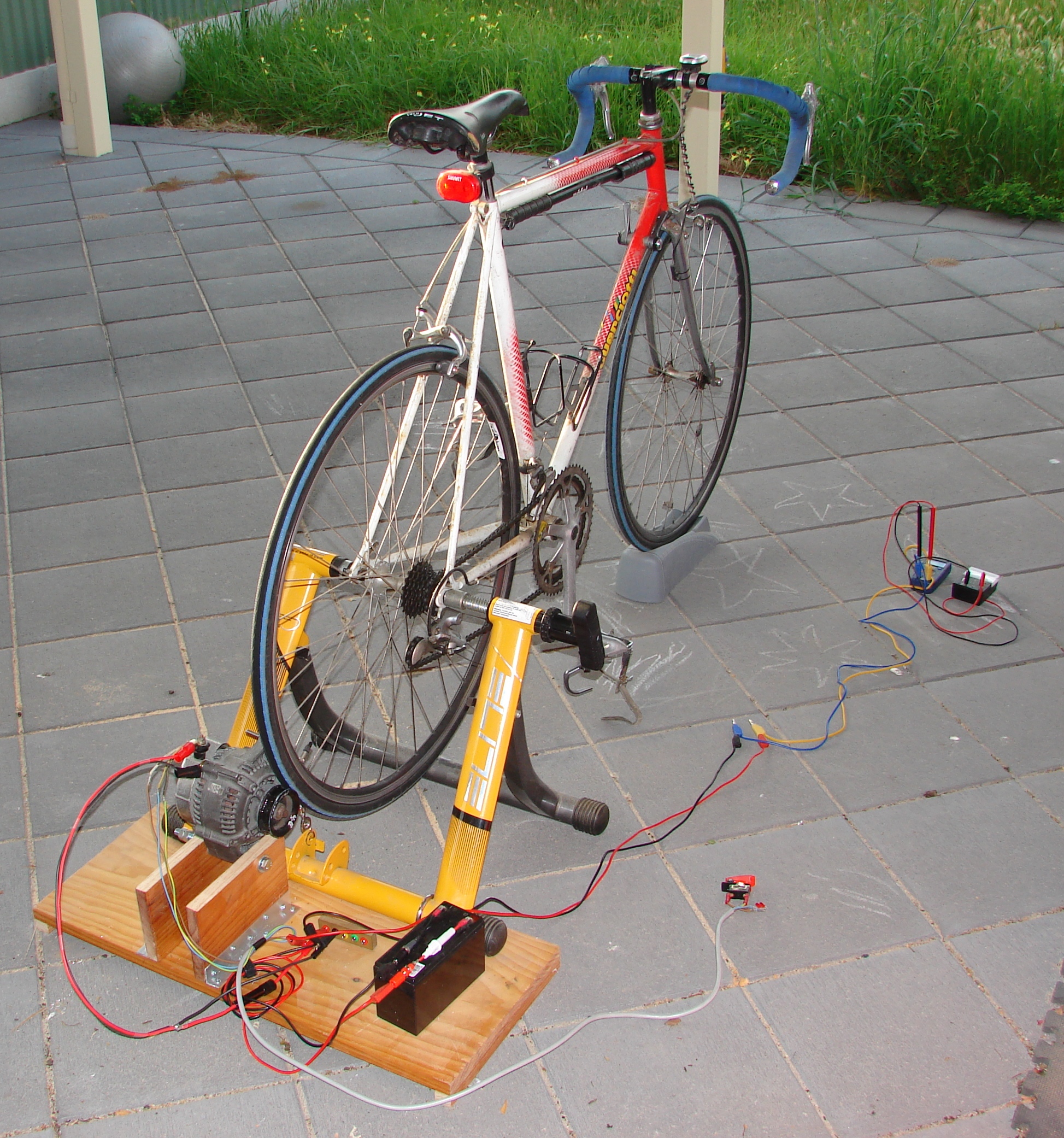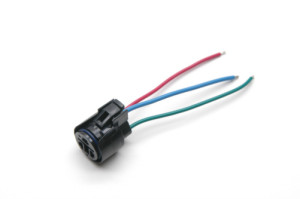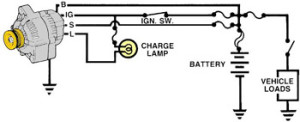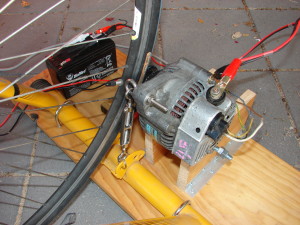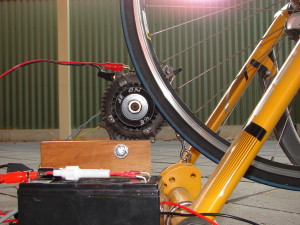A very useful site is the one for Bosch, which produces the after market replacement and spare engine alternators. The PDF downloads from this page have all the technical specifications of the alternator for each vehicle engine type. (Ed Update: Google ‘Bosch Alternator Wiring’ should find the details that you are after.)
The budget
Someone has asked about what the budget was… I have spent maybe $250 up to this point, but now knowing what I need it would be a little less. Some things could be purchased on e-Bay etc.
- Bicycle – Already had this, and can continue to be used as per normal.
- Bicycle trainer $115 on ebay (mine was new) (eg. http://shop.ebay.com.au/?_nkw=bicycle+trainer) Remove and throw away resistance roller.
- Alternator $55. From City Dismantlers, Gepps Cross (Toyota Section) Connecting plug – free – worth asking for it when you get the alternator, as mine was stripped from the wiring of a wreck.
- Old wooden shelving $??. It’s what I had lying around.
- Assorted Hardware: screws, bolts, toggle maybe $60. I used stainless steel toggle for tensioning, and Stainless U-bolts to clamp the trainer to the board. (Not the cheapest solution, but reusable parts.)
- Aluminum L section (cut and drilled to suit) $6 Purchased from Bunnings in 1.6m lendth.
- 12V Battery (required) $28 from Jaycar 12V 6AH Sealed Lead Acid. No reason for this specification other than this is what I had around.
- Switches with ‘missle cover’ $12. Always wanted on of these I want to install add a couple more.. a second one to switch the ‘load’ on… alternator has some trouble starting to generate if another load is pulling from the battery, and on to isolate the battery.
- Spade and Blade Crimp connectors $2.75 (per pack of 8) Various sizes. Still need to find proper size for battery terminal connection to alternator.
- Cables $?? Scavenged from various bits and pieces. Plan to use regular extension cable (from Bunnings) to extend ‘Ignition’ and ‘Load’ switch so that they are accessible from the handlebars while on the bike. (I might have to rethink this as these are rated for 10A AC, and some of the applications that I am looking at use 30A rated wire.
- Anderson Connectors $5 pair from Jaycar. I would like to replace the spade and banana plug connectors that are currently being used, with Anderson 30A connectors where ever possible. (This will be the subject of another blog post with links.)
I have also bought a couple of boxes from Jaycar to mount these swithes, as well as two LED’s (and resistor) that replaces the usual ‘charge lamp’.
Other considerations/thoughts/things to try..
I have tried making a radio call from the bike, powering my Handheld radio. There was sufficient noise on the supply to be heard on the output, while both receiving and (as reported) transmitting. Some work needs to be done to remove this (Large Capacitor + something else.. got some Amateur Radio friends on the case).
I have a small 240V inverter around somewhere. If I find it, I’ll see if it is possible to run a small TV directly while peddling.
A summary, of sorts.
Nothing in this project has really been engineered so I would like at some stage to take a bunch of measurements and do some calculations on the systems efficency etc.
For example, I would love to get a ‘current clamp’ and get some measurements of the running generator under different loads.
The alternator has a build in voltage regulator, which works by modifying the current in the rotor windings. This means that the choice of peddling rate doesn’t particularly matter (voltage remains the same) and the gearing is sufficient to spin up the alternator to fairly high RPM’s if required (calculation required).
Thanks everyone for your interest.
Update Fri, 24 July 2015: Article transfered to new MawsonLakes.Org website. Minor edits and updates made.
